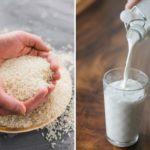1 Lactose Intolerance
 Lactose intolerance
Lactose intolerance
Lactose intolerance refers to the body’s inability to absorb and digest lactose, also known as milk sugar, which is found in breast milk, cow’s milk, goat’s milk, and more.
Cause
It is caused by a deficiency or absence of the enzyme lactase in the digestive system, which is responsible for breaking down lactose into simpler forms of glucose and galactose for easier digestion.
When lactose is not properly broken down, it can lead to digestive issues such as abdominal pain, vomiting, and even diarrhea.
In cases of diarrhea caused by lactose intolerance, continuing to consume milk can worsen the condition.
Treatment and substitution with lactose-free milk are recommended. However, lactose intolerance can be managed over time.
One approach is to gradually introduce milk into the diet, starting with small amounts 30 minutes after a meal and gradually increasing the quantity over several days. Within 3 to 7 days, the body should adjust to this type of sugar, reducing abdominal pain. If unsuccessful, discontinue for a while and retry this method.
Alternatively, yogurt can be a suitable substitute for milk. The lactose in yogurt has been converted into lactic acid, reducing the likelihood of abdominal pain and loose stools, while retaining the same protein and calcium content as fresh milk.
For further advice, check out our additional tips to alleviate abdominal pain effectively at home.
2 Switching to a New Brand of Milk

Each brand of milk has a unique formula, and you may find that your body doesn’t agree with a particular ingredient in a new brand.
If you’ve been using the same type of milk without issues and only experience stomach pain after switching to a new brand, it’s possible that your body isn’t compatible with that specific milk.
To avoid this, introduce new milk gradually and in small amounts to gauge your body’s reaction.
If your current milk suits your digestive system and contributes to your overall health, there’s no need to switch to a new brand, as all milk types provide similar basic nutritional benefits.
3 Consuming Low-Quality Milk

Low-quality milk may include counterfeit or expired products, or milk that has been improperly stored, resulting in clumping, mold, or spoilage.
Consuming such milk is likely to cause digestive issues.
It is important to verify the source and expiration date of the milk and ensure that it is stored according to the manufacturer’s instructions.
4 Improper Milk Preparation

Preparing milk may seem straightforward, but incorrect preparation can impact its quality.
Using water that is too hot can reduce or alter the nutritional content of the milk, while water that is not hot enough may not properly cook the milk, potentially leading to stomach pain for those with sensitive digestion.
Learn how to prepare milk according to the manufacturer’s instructions to ensure optimal quality.
5 Drinking Milk on an Empty Stomach

If you have stomach ulcers, you are more likely to experience abdominal pain when drinking milk on an empty stomach.
Milk is nutrient-rich and contains vitamins and minerals. Drinking it on an empty stomach can cause fatigue and drowsiness due to the release of stomach acids, which react with casein in the milk, leading to digestive issues.
It is recommended to consume milk 30 minutes after a meal.
If you experience stomach pain after drinking milk, consider whether any of the above reasons apply to your situation.
Skin Care Tips for the Post-Lunar New Year: Regain Your Glow and Feel Refreshed!
Are you feeling the aftermath of the hustle and bustle of Tet festivities on your skin? With cold temperatures, time spent outdoors, and all the excitement, it may not be looking its best. Don’t fret – follow the tips laid out in this article to restore your skin to its smooth, bright, and flawless look!
Experience Radiant Skin Glow with Rice Cooked in Fresh Milk
Are you looking for ways to achieve healthy, luminous skin without spending a fortune on expensive creams and lotions? If so, then why not try this simple DIY recipe using just two natural ingredients – rice and milk? In this article, we will take a look at this homemade skin care solution and find out how it can benefit your complexion!




































